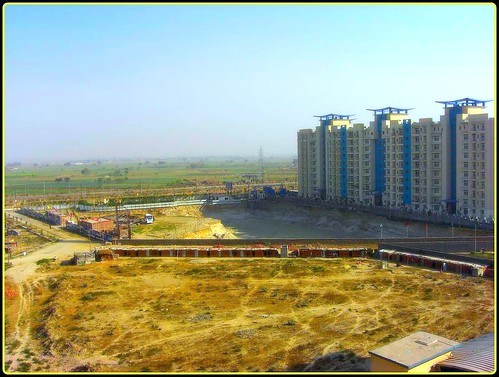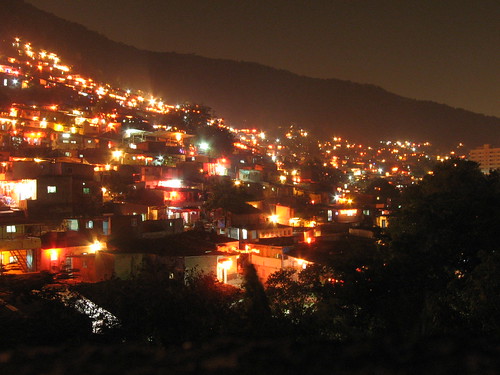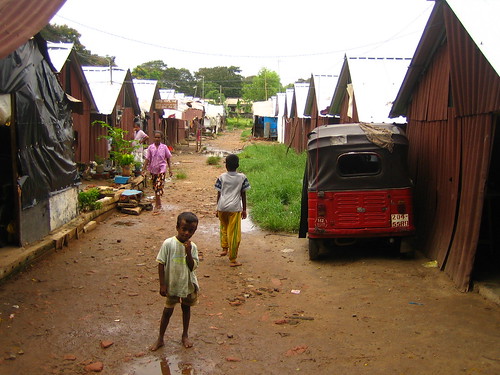Posts tagged development
The IMF and The World Bank
Mar 28th
In the 2005 IB Economics syllabus you are required to evaluate the role of the International Monetary Fund (IMF) and the World Bank in their contributions to growth and development. In simple terms, you should know what they do, and their advantages and disadvantages. Interestingly, much of the online media out there is overtly critical of these international financial institutions. Try to maintain some balance in your evaluation by acknowledging benefits as well as explaining the disadvantages. Here are some key resources – you should spot whether they are biased in favour of or against the IMF and WB (or neutral).
a) Websites
International Monetary Fund
http://www.globalization101.org/imf-introduction/
b) Videos
Finally, if you have time (one and a half hours), you might choose to watch a very critical but fascinating documentary film called Life and Debt – I highly recommend this, but it can be disturbing at times.
Introduction to Development
Jan 22nd
This post offers some resources to help learn about the key syllabus pints under section 3.2 of the 2005 IB Economics syllabus.
Definitions of economic growth and economic development
and
Differences in the definitions of the two concepts
This video excellent by Flame India includes points on limitations of using GDP to compare welfare (below) and alternative measures (HDI). Take note of the definitions by Michael Todaro and also the contributions of Amrtya Sen and Mahbub ul Haq. Note how Economic Growth contributes towards Progress in Human Development.
Gross Domestic Product (GDP) versus Gross National Product (GNP) as measure of growth
To recap the meaning of GDP, you might use this opengecko post:
To see some examples of actual GDP figures, you could use this post:
Comparing GDP and Other Indicators Across Countries
PAJ Holden gives a detailed explanation of the difference which lasts 8 minutes:
This video summarises the differences much more quickly:
Limitations of using GDP as a measure to compare welfare between countries
Notice – Joseph Stiglitz also points out the difference between GDP and GNP (above) as well.
Allowance for differences in purchasing power when comparing welfare between countries
Alternative measurements of development
Composite Indices – HDI and beyond by hdr.undp.org

See the original (via EU Infrastructure) here.
Problems of measuring development
For this section, you may conduct your own online research and/or consult your text book.

Visualise the impact of Asia’s Rapid Growth
Sep 6th
Image: bbc
This interactive, hosted on bbc.co.uk, is good for studies in Geography, Economics, and more. It is a quick way into the type of visual data offered by Gapminder.org
The interactive dataset lets the user track a number of Asian countries as their wealth / income grows between 1960 and 2006, and compares the changes of one other key development variable – choose from Health, Education, Life Expectancy and Energy.
With it, you get to see how the sample of countries compare to both the UK and USA. Click on each country to switch them on.
Look, for example, at how South Korea’s average years of education for women aged 15-44 fares.
Link:
In graphics: Rising Asia hosted on bbc.co.uk
All The World’s Flights In A Day
Mar 22nd
This video (of which there are several copies on youtube) could provoke a lot of interesting questions. Where in the world receives the most air traffic? Why? How does this reflect historical developments? Does the spread of daylight hours affect flight concentrations? Which two continents / regions are the most connected by flights? Again, why? How does the perspective of a 2D map affect the apparent speed of flights in different parts of the globe? How else might this data be shown?
Thanks to my colleague Darren for passing this on.

The World’s Most Typical Person
Mar 7th
The world’s most typical person is male and in terms of the mode average ethnic group, is a Chinese, Han man. His age, in terms of median average is 28. The typical face shown above is built of 190 000 photos of 28 year old ethnic Han men. But as the video tells us, he won’t be the most typical person for long …
As World Population approaches 7 billion, NationalGeographic have created a brilliant infographic-style animation, complete with catchy tune and thought-provoking statistics. (There’s also a healthy qualifier in there – “typical is always relative”).
A great starter for population studies or even for discussions about global inequality, like the World Scaled Down to A Village of 100 idea. It might also have value in Theory Of Knowledge discussions of data and what we mean by ‘typical’ and ‘ethnicity’. There’s even a bit relevant to the economic concept of ‘needs and wants’ at the very end.
Packed full of cross-curricular uses, it is simply a ‘must see’.
Developed and Developing Economies – Online Resources and Revision Materials
Feb 21st
The full title of this section from the IGCSE syllabus is:
‘Developed and developing economies: trends in production, population and living standards’

Image: Some rights reserved by souravdas
Here is what the syllabus requires of us:
Candidates should be able to:
• describe why some countries are classified as developed and others are not;
• recognise and discuss policies to alleviate poverty;
• describe the factors that affect population growth (birth rate, death rate, fertility rate, net migration) and discuss reasons for the different rates of growth in different countries;
• analyse the problems and consequences of these population changes for countries at different stages of development;
• describe the effects of changing size and structure of population on an economy;
• discuss differences in living standards within countries and between countries, both developed and
developing.
![]() There is a lot of overlap between this section of IGCSE Economics syllabus and the Geography (I)GCSE – if you are studying that subject, you will be able to use some of your Geography notes and resources too. Some of the websites given below are Geography revision pages.
There is a lot of overlap between this section of IGCSE Economics syllabus and the Geography (I)GCSE – if you are studying that subject, you will be able to use some of your Geography notes and resources too. Some of the websites given below are Geography revision pages.

Some rights reserved by godwin d
a) describe why some countries are classified as developed and others are not;
Quite a detailed, interactive site: http://bbc.in/hZmNJh
Note: development is bigger than economci growth. Think of economic growth as a key ingredient of development, a sub set of development. This video by geographyalltheway shows us that development can mean a lot of things:
b) recognise and discuss policies to alleviate poverty;
Aid
Fair Trade
mobiuslive posted an excerpt video from eq.tv on fair trade:
And DiagramConsultores gives us this video on Fair Trade in the Domincan Republic:
Microfinance
Video from Opportunity International:
WorldBank provides an example from Mauritania:
c) describe the factors that affect population growth (birth rate, death rate, fertility rate, net migration)

Image: Some rights reserved by Aidan Jones
d) discuss reasons for the different rates of growth in different countries;
e) analyse the problems and consequences of these population changes for countries at different stages of development;
cheergalsal offers this summary of the Demographic Transition Model:
And geographyalltheway gives us this animated explanation:
http://bbc.in/htA601– and follow the links to the pages that follow this first one
Test your understanding here: http://bit.ly/g9Spcs
f) describe the effects of changing size and structure of population on an economy;
g) discuss differences in living standards within countries and between countries, both developed and developing.

Source: http://www.mint.com/blog/trends/mint-map-global-wealth-distribution/
The World Scaled Down to A Village of 100
Nov 28th
Just came across this video, based on what is now a widely-read summary of some key demographic and economic statistics. These statistics do need to be verified, as the opening shot states, if not for any other reason than the age of the data. This notion of the world as a village of 100 (and the associated data) first emerged in the early 1990s.
As David Truss argues, this could be really useful for cross-curricular discussion. I’ve used the Village of 100 idea a few times – in Geography, Economics and as part of an assembly. I first received an email with this idea in 1998, and used some of it when visiting a Secondary School in southern Ghana in 2003. Teaching a Geography class of nearly 70 students, I tried to apply the same concept for some of the issues covered by asking the appropriate proportion of the class to stand up. The Ghanaian students were blown away by the proportion of their class that would live in Asia (having guessed Africa and Europe to carry the highest populations, by far). The ICT teacher at that school (who commanded a suite of 16 computers for a school of c. 2,500 students) was fascinated by the internet access statistic.
For another way of visualising global economic inequality (which features in the Village of 100 idea), I highly recommend this website:
Update:
This impressive and simple website helps you to make quick comparisons between your own country and any other – this can call up statistics that call to mind the inequality depicted in the Village of 100. Watch out for the adverts though:




